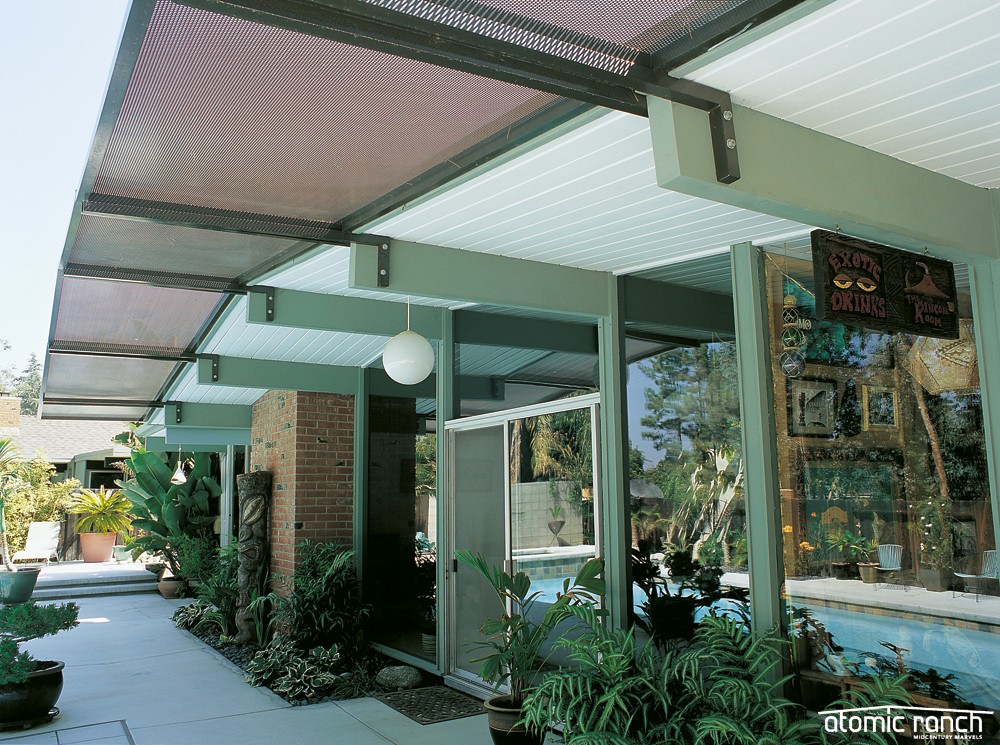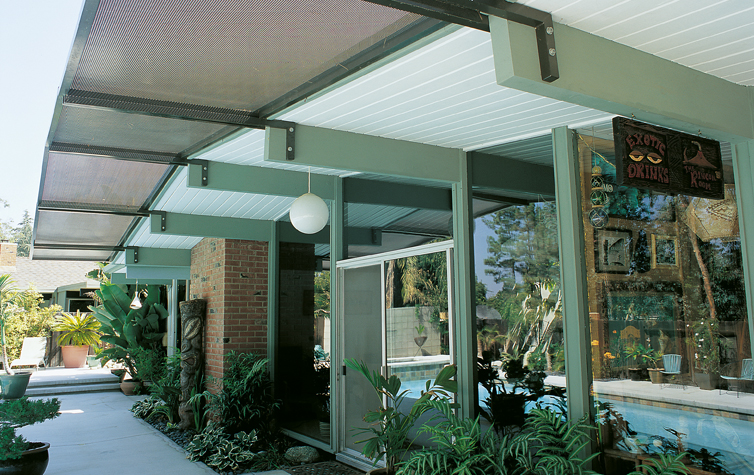
When Mickee and Ron Ferrell found their Thousand Oaks, Calif., Eichler in 1989, the exterior amenities consisted of an overgrown yard with 60’ pine trees and a rotted patio cover and deck. Under the classic roof, the gunk on the surfaces revealed the sellers to be heavy smokers, and the wife ran an interior decorating business out of the house so all of the walls were covered with floral wallpaper. The brown wall-to-wall carpet looked OK at first but proved to be stained with animal urine, and the sliding glass doors and windows had scratch marks at dog height.
Still, it was better than most of the homes the couple toured when they were house hunting. “I remember when I walked into this one it felt familiar,” says Mickee, a marketing manager for a publisher who lived in an Eichler as a kid. “The house my parents rented always felt comfortable to me—maybe it was the open floor plan. But the sellers kind of missed the point of this house.”
“Every home we went into we’d say, ‘It’s not open enough; we’d have to knock this wall down, open this room up,’ ” Ron recalls. “Finally our patient English realtor said, ‘There’s a house that kind of sounds like what you’re talking about.’” It turned out to be an Eichler, but one with a flawed location that needed more work than the couple was prepared for. Eventually they stumbled across their 1964 tract home.
Ron works in construction, but experienced his share of frustration with getting the house in shape once escrow closed. The radiant heating stopped working the day after they moved in, and the asphalt roof, which looked like it was in good shape—it was six months old and had a warranty—began leaking all along the route of a gas pipe that had been installed to service a new hot tub. The roofing saga alone will either amuse or frustrate you; you may want to skip ahead …
An inspection he was involved in on a commercial building served as a primer on flat-roof options for Ron: one section was metal, one was hot-mopped and one was polyurethane foam that was 20 years old. “The building supervisor said that every five or six years they had to repair or replace the hot-mopped roof,” Ron reports, “and that they hadn’t had much problem with the metal roof; but the foam roof had never had any repairs to it at all.”
That sold Ron, but at that time foam roofs on residences were few and far between, so he had to convince the commercial roofer that it was worth their while to take on his home, some 75 miles away. They evidently saw the Thousand Oaks Eichler development as a promising customer base, and agreed to do what amounted to R&D on the Ferrells’ installation.
The company put the roof on but didn’t pull a permit and had to get one after the fact, something that Ron is a stickler about. “The first city inspector was a woman who wore high heels for the inspection, which left divots across the roof,” Ron says with bemusement. The building department made the company cut out a 4’x4’ section to examine the underlayment, which they said looked OK, but weren’t sure about the rest. They then made the company pull off all of the foam so the entire surface could be inspected before reroofing.
Ron had asked the roofers to raise the curbs on the skylights, but they didn’t and, with the foam right up to the edge of the skylights, they began to leak. “The skylight manufacturer said they’d come out and replace them if they were leaking because they had a lifetime warranty,” he says, “but that inspection showed the roofers had sealed around the skylights with silicon, which cracks them and voids the guarantee. Eventually they all had to be replaced.”
Raising the Roof
The roof saga continues for the Ferrells as they try to rescue their home from years of depreciation. Find out how they get their project back on track in part 2!












